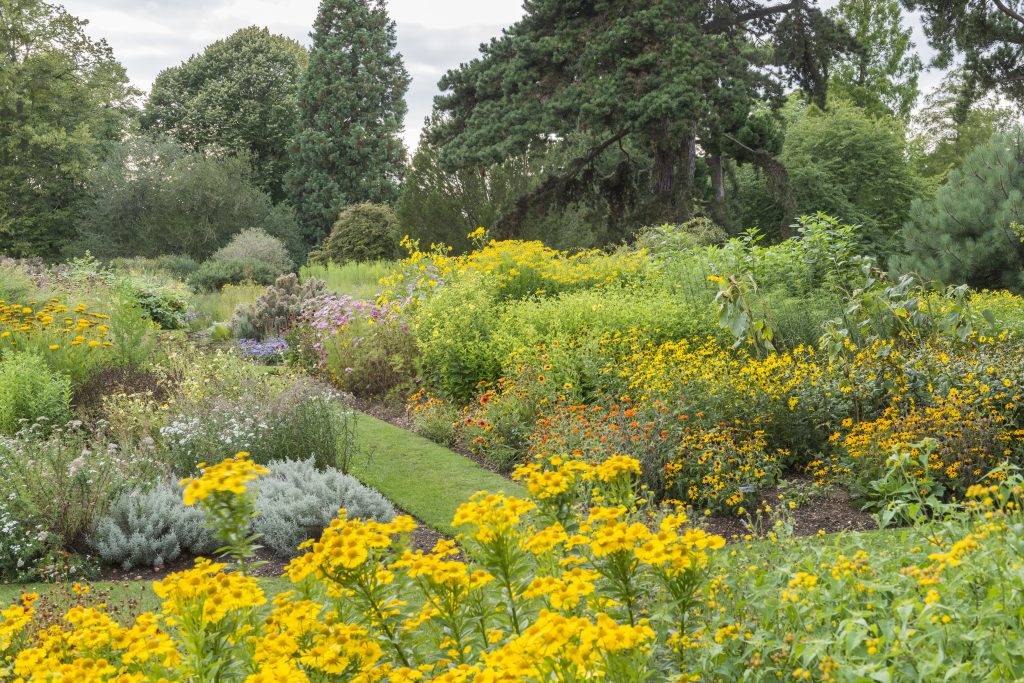

A wander through the beds allows study of plant species. Here members of the the Asteraceae, or daisy family, can be compared not only with one another, but also with members of closely related Apiaceae (carrot family) and bellflower family Campanulaceae. The Systematic Beds comprise approximately 120 individual beds, representing 78 flowering families.

The Rising Path
A birds-eye view of the Beds and their intricate layout can be gained from the neighbouring Rising Path. Constructed in 2018, this feature includes interpretation explaining how plants adapted to life on land, and how they evolved into the 400,000 species known today. The displays explain how to look at plants, and how to organise them to aid communication and teaching, and enhance understanding of the plant world.









